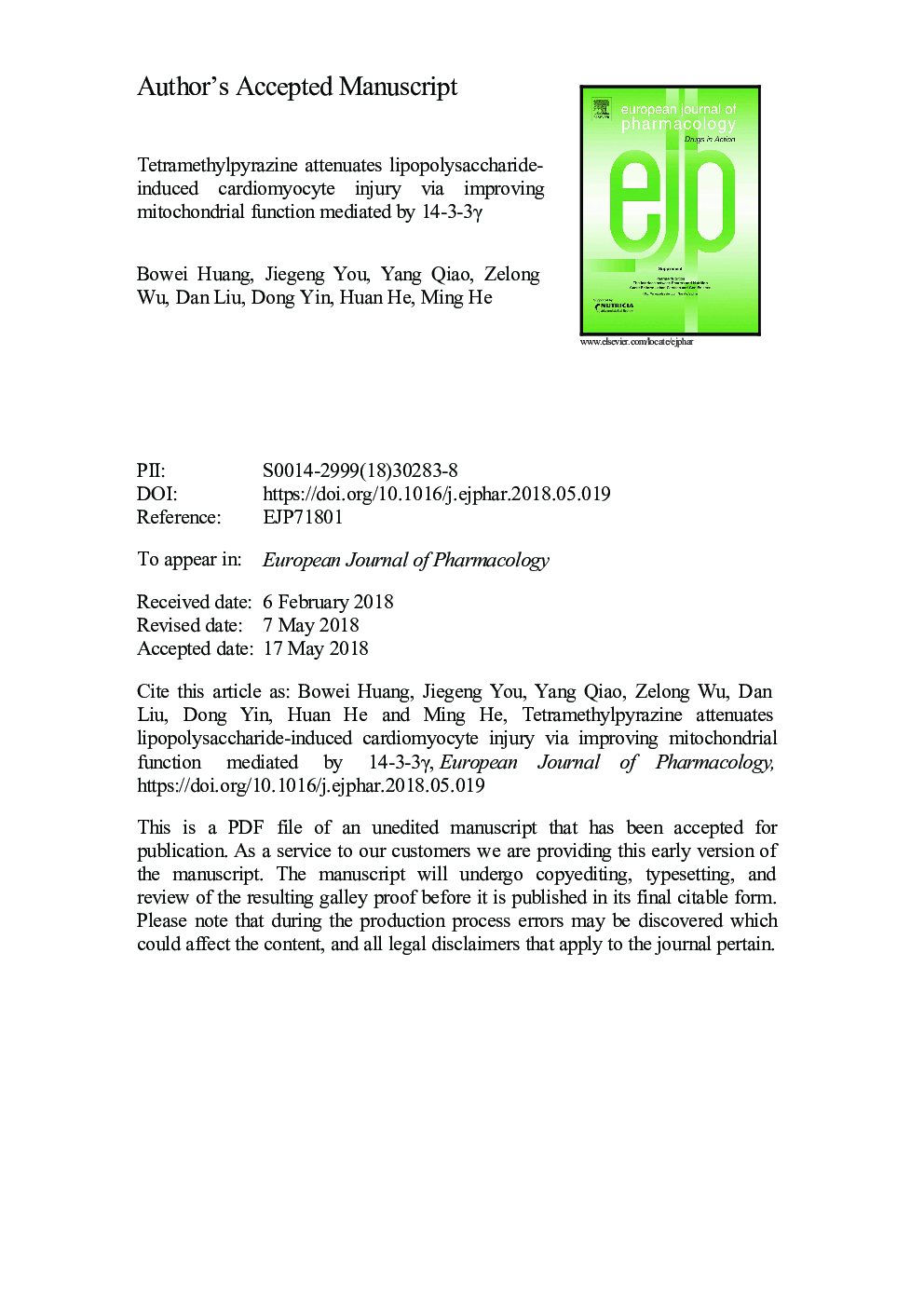| Article ID | Journal | Published Year | Pages | File Type |
|---|---|---|---|---|
| 8528965 | European Journal of Pharmacology | 2018 | 38 Pages |
Abstract
Lipopolysaccharide (LPS) is one of the many reasons that can cause myocardial injury. Our previous works have demonstrated that 14-3-3γ could protect myocardium against LPS-induced injury. Tetramethylpyrazine (TMP), an alkaloid found in Chinese herbs, exerts myocardial protection in many ways with multiple targets. We hypothesized that the cardioprotection of TMP against LPS-induced injury is attributed to upregulation of 14-3-3γ and improvement of mitochondrial function. To test the hypothesis, we investigated the effects of TMP on LPS-induced injury to cardiomyocytes by determining cell viability, LDH and caspase-3 activities, reactive oxygen species and MMP levels, mPTP openness, and apoptosis rate. The expression of 14-3-3γ and Bcl-2, and the phosphorylation of Bad (S112) were examined by Western blot. LPS-induced injury to cardiomyocytes was attenuated by TMP via upregulating expression of 14-3-3γ, and Bcl-2 on mitochondria, activating Bad (S112) phosphorylation, increasing cell viability and MMP levels, decreasing LDH and caspase-3 activity, reactive oxygen species generation, mPTP opening and apoptosis rate. However, the cardioprotection of TMP was attenuated by pAD/14-3-3γ-shRNA, an adenovirus that knocked down intracellular 14-3-3γ expression. In conclusion, the cardioprotection of TMP against LPS-induced injury was through up-regulating the expression of 14-3-3γ, promoting the translocation of Bcl-2 to mitochondria, and improving the function of mitochondria.
Related Topics
Life Sciences
Neuroscience
Cellular and Molecular Neuroscience
Authors
Bowei Huang, Jiegeng You, Yang Qiao, Zelong Wu, Dan Liu, Dong Yin, Huan He, Ming He,
